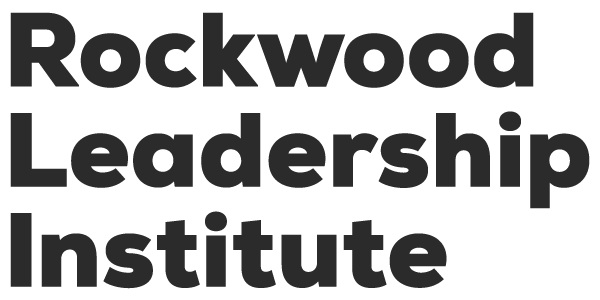This is a guest post from John McGuirk, director of the Performing Arts Program at the William and Flora Hewlett Foundation. The original post can be found here on Work in Progress, the foundation’s blog.

The leadership team at Rising Arts Leaders San Diego provides programs and opportunities for emerging arts and cultural administrators to build their professional network and skills. (Photo Credit: Leah Fasten)
The William and Flora Hewlett Foundation’s Performing Arts Program invests in arts leadership because we believe the vitality of the sector is fundamentally dependent on the quality of its leadership. As part of our commitment to strengthening leadership, we recently commissioned Open Mind Consulting to conduct research—including in-depth interviews with Bay Area, California, and national arts leaders—to help shape our future investments.
Today, we are releasing a new report, “Moving Arts Leadership Forward: A Changing Landscape,” because we believe the findings have implications that go far beyond our grantmaking. They show how different generations experience their work in the arts sector and highlight how the differences affect engagement, innovation, and other factors critical to the success of individual arts organizations and the health of the field as a whole.
Written by my colleague Emiko Ono, who has led this work for the Performing Arts Program, the report explains the research and contains recommendations for the field, as well as more detail on our plans for responding to the findings. It also contains a quiz that we encourage you to take to learn more about your organization’s approach to cross-generational leadership and begin a conversation about what that approach means for your work.
At the heart of the findings is a challenged definition of “leadership.” Members of younger generations often see leadership as the fostering of a culture of connectedness, collaboration, and change—they believe leadership is rooted in the efforts of many. This view is in contrast to the more traditional, hierarchical structures and practices of many arts organizations and funders.
What is at stake in this ongoing conversation about the meaning of leadership? Arts organizations must make the most of their talent, or risk driving away potential leaders who are ready to contribute, reluctant to “wait for their turn,” and who have the entrepreneurial chops to find other ways to realize their ambitions.
But organizations should also consider the diversity of ideas and experiences embodied by their entire staff, and how embracing these perspectives can help them connect with new audiences and develop innovative approaches to achieving their mission.
Leadership that flows from the vision of a single individual has served the nonprofit arts sector well for a generation or more. But to be able to effectively respond to an increasingly demanding environment, organizations not only must adapt, they must be adaptive.
Individuals with the responsibility, and the authority, to ensure that their organizations continue to thrive should invite their colleagues—people who care deeply about the mission of their organizations and understand their unique value to the communities they serve—to participate meaningfully in shaping the future of those organizations. In other words, they should invite them to share leadership.
Based on the research findings, we are modifying our approach to arts leadership funding. After six years of work focused on equipping young and emerging arts leaders with necessary skills and competencies, we will broaden our focus to facilitate and leverage cross-generational leadership practices.
Early-career leaders will continue to be our primary targets and beneficiaries, but we’ll help them by paying attention to mid- and late-career managers as well—helping these experienced leaders find new ways to share responsibilities and authority within their organizations. In addition to improving leadership, this kind of support should strengthen the arts sector as a whole.
The research also revealed that leadership networks are not neatly confined to particular geographies. At present, California has five overlapping and interlocking networks. To address this complexity and ensure proper support for Bay Area leadership, we need to expand our investments beyond the Bay Area to include other major metropolitan areas in California.
This limited expansion acknowledges the interdependent nature of California’s arts ecosystem and addresses the reality that focusing our efforts in leadership development on one region constrains the potential to fully realize our goals even for that region. We will, accordingly, continue to work with the Center for Cultural Innovation to fund statewide opportunities for individual and organizational leadership development projects, as well as convening activities. We also plan to add complementary supports for leaders of color, as well as mid-and late-career leaders, over time.
Experience and research show that a singular focus on skills training for emerging leaders, while vital for the sector, is not sufficient to create a healthy arts ecosystem. Having begun to address needs of emerging arts leaders in our funding to date, the next phase of our work will focus more intentionally on helping organizations adapt to new and emerging leadership styles—an initiative we are calling Arts Leadership Forward.
Reimagining leadership is not a call to action that we take lightly. Nevertheless, we cannot ignore the insights from a growing body of research that clearly shows it is a necessary one. Change will not be easy, of course, not least because the change required is in many ways antithetical to the more traditional form of leadership that our sector currently embraces. That is why the future of the field depends on what current leaders and funders choose to do in this moment.
In sharing our research, we hope to contribute to the broadening of the field’s view of leadership, prepare it for a future that is rushing toward us, and urge our colleagues to seize this opportunity for building an even more resilient and vibrant nonprofit arts field.
This is a guest post from John McGuirk, director of the Performing Arts Program at the William and Flora Hewlett Foundation. The original post can be found here on Work in Progress, the foundation’s blog.

